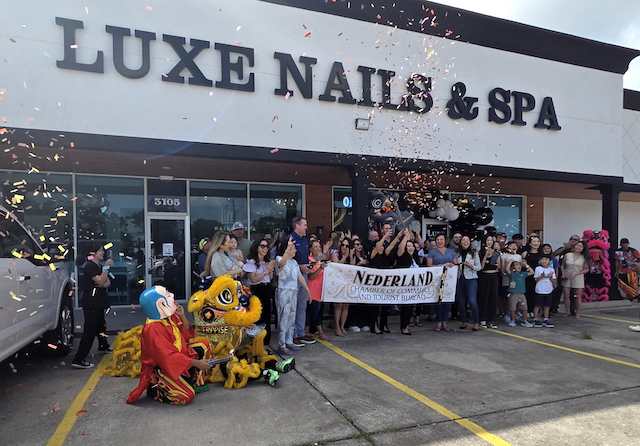Early voting soars in Texas’ larger counties
Published 9:40 am Sunday, October 28, 2018
By Matt Zdun
The Texas Tribune
texastribune.org
Trending
Early Friday morning at a Fiesta Mart in Austin, voters dodged hurried grocery shoppers and their shopping carts and rushed to line up to vote in a tucked-away cove of the store. By mid-morning, the line to vote stretched past the nearby ice machine and into the butter and milk section several feet away.
Susan Gredler, the early voting deputy at Fiesta Mart, said she has seen “huge” numbers of people — about 900 per day — at her polling place all week since early voting began Monday. At times, she said the line has wound around the inside perimeter of the store and past the meat section in the back.
“We’ve been really worried they’re waiting too long,” said Gredler. “But nobody’s really been discontented to the point that they want to leave.”
Common scene
The bustling scene at Fiesta Mart is a common one. Voters across the state have come out in massive numbers during the first five days of early voting, and soon, more Texans will have voted early in 2018 than in all of 2014’s early voting period, according to data from the secretary of state’s office.
The state’s five largest counties have all nearly doubled the turnout compared to the same point in 2014. By the time the polls closed Thursday, 13.2 percent of registered voters in Harris County, the state’s largest county, had voted, compared to 6.4 percent at the same time in 2014. That number comes close to the 16.4 percent voter turnout seen at the end of the fourth day of early voting in 2016, a presidential year.
Trending
The story is similar in Dallas County, which recorded a voter turnout of 16.9 percent at the end of Thursday, compared to 5.9 percent at the same point in 2014, and in Tarrant County, which recorded a voter turnout of 16 percent at the end of Thursday, compared to 7.3 percent at the same point in 2014.
In Travis County, where the Austin Fiesta Mart polling location is, Tax Assessor-Collector and Voter Registrar Bruce Elfant reported on Facebook that as of 4 p.m. Friday, 22 percent of registered voters had cast their vote. The number hovered around 7 percent at the same point back in 2014.
“After just five days of early voting, the 2018 voter turnout will likely have passed the entire Early Vote turnout for the 2010 and 2014 elections,” Elfant wrote.
Senate, plus
Some counties — like El Paso, Williamson and Cameron — have already surpassed the overall voter turnout during the entire two-week early voting period in 2014. Overall, by the time the polls closed on Thursday, 16.3 percent of the 12.3 million registered voters in the 30 counties with the most registered voters had cast ballots.
“It’s pretty remarkable to double or triple voter turnout,” said Renée Cross, the senior director of the Hobby School of Public Affairs at the University of Houston.
While she said the popular Senate race pitting U.S. Rep. Beto O’Rourke, D-El Paso, against U.S. Sen. Ted Cruz explains some of the increase in voter turnout, she said “it’s got to be more than the Senate race.”
“It’s also national politics,” Cross said. “People on one side are driven to the polls because they want to vote against the party of Trump, and, on the other side, people are energized to vote because of the [Supreme Court Justice Brett] Kavanaugh nomination hearings.”
Cross said it’s been a “very long time” since Texas voters from both political parties have been as energized as they are.
‘Fed up’
Many early voters who lined up on the black-and-white checkerboard floor of the Fiesta Mart, near the constant beeping of checkout counters, said they were focused on both local races and national races.
“We’re all voting in the Senate race,” said Robby Earle, a 26-year-old law student who was asked by election officials to zip up his burnt yellow hoodie to cover up his “Beto” t-shirt underneath. “But we’re also sending a message two years after 2016 that the current Congress is not getting a seal of approval.”
Norris Ferguson, 68, a retiree proudly waving around her “I voted” sticker, said she is “fed up” with elected officials in Washington.
“We can’t take it anymore,” Ferguson said. “We need to do something.”
Ferguson, along with scores of early voters at the Fiesta Mart, said she had heard reports of massive voter turnout earlier in the week and wanted to avoid those long lines as well as lines on Nov. 6, Election Day.
Too early
Mark Jones, a fellow in political science at Rice University’s Baker Institute for Public Policy, said the long lines at polling places are “notable,” but he said that “almost any voter turnout should be above 2014.”
Jones also said it is too early to draw conclusions about whether strong early voting turnout will mean strong overall turnout. Early voting could be “cannibalizing Election Day turnout, ” he said.
“More and more people are voting early,” said Jones, who estimates that between 60 and 75 percent of registered voters will cast their vote before Election Day. “People have gotten used to it, and campaigns have been encouraging it.”
He noted that a greater proportion of voters this year will be under the age of 35.
“Beto O’Rourke has spent quite a bit of money and time targeting millennials and post-millennials with the correct belief that they support him more than any other age group,” Jones said.
Cross said grassroots groups across the state have also been aggressively targeting young voters. In Travis County, 39 percent of registered voters this year are younger than 35, according to the county’s voter registration data. That’s up from 33 percent of registered voters in 2014. But high voter registration numbers do not always translate into high voter turnout, Cross said.
Kelsey Scarborough, a 27-year-old who works in the tech industry, said Friday at the Fiesta Mart polling location that she had never voted in an early election before. She said her sister and her friend convinced her to vote.
“I’m not actually really involved in politics,” Scarborough said. “But the people around you help you get to the polls.”
Early voting runs until Nov. 2.
Disclosure: The University of Houston and Rice University have been financial supporters of The Texas Tribune, a nonprofit, nonpartisan news organization that is funded in part by donations from members, foundations and corporate sponsors. Financial supporters play no role in the Tribune’s journalism.
The Texas Tribune is a nonpartisan, nonprofit media organization that informs Texans — and engages with them — about public policy, politics, government and statewide issues.





